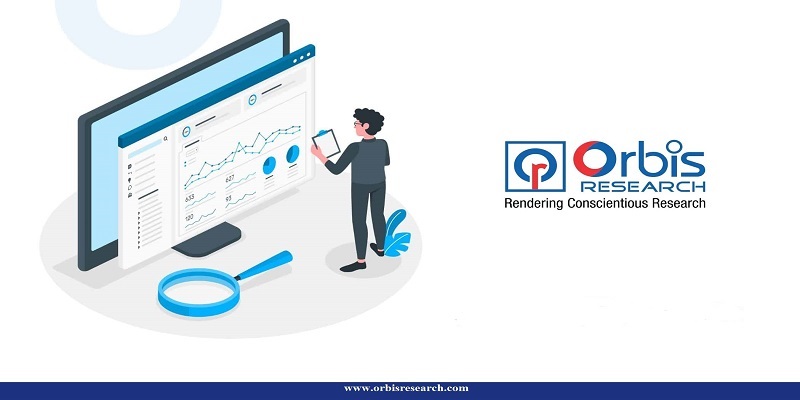
Press Release, Orbis Research Strategic market segmentation is a fundamental tool for businesses operating in the competitive Textile Dyes industry. A recent report sheds light on the different ways in which the market can be segmented, such as by product types, service offerings, capacity, and regional growth prospects. This segmentation approach helps companies craft strategies tailored to specific market needs, ensuring they can leverage opportunities for growth. This article outlines key segmentation strategies in the Textile Dyes industry, offering businesses the insights necessary for effective decision-making.
Request a sample report @ https://www.orbisresearch.com/contacts/request-sample/7112926
Product and Service Segmentation: Key Focus Areas
Product and service segmentation form the backbone of Textile Dyes market analysis. By categorizing the market based on various technologies and services, companies gain a better understanding of where the industry currently stands and how it might evolve.
Textile Dyes Technologies: Driving Innovation and Efficiency
The report emphasizes the importance of certain Textile Dyes technologies that are dominating the market due to their high energy efficiency and performance. These technologies are not only setting industry standards but also leading the way in innovation.
Energy-Efficient Technologies: A Path to Sustainability
Energy-efficient technologies are identified as the key to advancing the Textile Dyes industry. These solutions aim to reduce energy consumption while maintaining maximum output, making them highly attractive to both businesses and governments focused on sustainable practices.
Expanding Market: From Technology to Services
Beyond the technologies themselves, the Textile Dyes market also includes critical services such as design, construction, and ongoing operation and maintenance. This broad perspective allows stakeholders to understand the entire value chain and pinpoint opportunities for investment and improvement.
Comprehensive Value Chain Analysis
For businesses aiming to secure a position in the Textile Dyes market, understanding the entire value chain is essential. The report examines each phase, from initial design and construction to long-term operation and maintenance.
Design and Construction: Setting the Foundation
Design and construction services play a critical role in the success of Textile Dyes projects. Selecting reliable partners for these stages is vital to ensure the projects are built for longevity, meet performance requirements, and can adapt to future needs.
Textile Dyes market Segmentation by Type:
Disperse Dyes
Reactive Dyes
Sulfur Dyes
Vat Dyes
Acid Dyes
Other Dyes
Textile Dyes market Segmentation by Application:
Apparels
Institutional
Technical Textiles
Other
Direct Purchase the report @ https://www.orbisresearch.com/contact/purchase-single-user/7112926
Operation and Maintenance: Ensuring Long-Term Success
Once Textile Dyes systems are operational, ongoing maintenance is crucial for ensuring their efficiency. The report provides guidance on best practices for maintaining systems to deliver consistent results over time.
Capacity-Based Segmentation: Meeting Market Needs
Capacity segmentation is another essential criterion analyzed in the report. It focuses on both small-scale Textile Dyes solutions for remote communities and large-scale systems designed for urban and industrial applications.
Key Players in the Textile Dyes market:
Yorkshire
Atul
TAOKA
Eksoy
Archroma
Bodal Chemical
Everlight Chemical
Milliken Chemical
Sumitomo
Nippon Kayaku
Burboya
Osaka Godo
Kiri Industries
BEZEMA
RUDOLF GROUP
Organic Dyes and Pigments
Setas
Colourtex
LonSen
Transfar
Runtu
Huntsman
Hubei Chuyuan
Allied Industrial
Jay Chemicals
Jihua Group
Aarti Industries
Kolorjet
Anand international
Kyung-In
Small-Scale Solutions: Niche Market Potential
Smaller, community-based Textile Dyes units are particularly valuable for remote or underserved areas. These solutions provide vital services in regions lacking traditional infrastructure, offering businesses the chance to tap into niche markets.
Large-Scale Solutions: Urban and Industrial Needs
For urban centers and industrial use, high-capacity Textile Dyes systems are necessary. These large-scale solutions are capable of handling the demands of large populations and industries, ensuring reliable service delivery.
Do You Have Any Query Or Specific Requirement? Ask to Our Industry Expert @ https://www.orbisresearch.com/contacts/enquiry-before-buying/7112926
Geographic Segmentation: Targeting Growth Regions
The report also highlights regional segmentation, focusing on areas with the greatest growth potential. Factors such as climate change, population growth, and local Textile Dyes scarcity are driving demand for Textile Dyes solutions in specific regions.
Emerging Opportunities in Africa and Asia
Africa and developing Asia are two regions highlighted for their emerging demand for Textile Dyes solutions. Environmental challenges and rapid urbanization have created significant market opportunities in these areas, where scalable and sustainable solutions are in high demand.
About Us
Conclusion: Strategic Segmentation for Success
By utilizing market segmentation strategies that focus on product, service, capacity, and regional dynamics, businesses in the Textile Dyes industry can position themselves for success. These strategies not only enable companies to exploit growth opportunities but also address global challenges, helping improve living standards in underserved regions.
Contact Us:
Hector Costello
Senior Manager – Client Engagements
4144N Central Expressway,
Suite 600, Dallas,
Phone: +1 (972)-591-8191,
Email: sales@orbisresearch.com